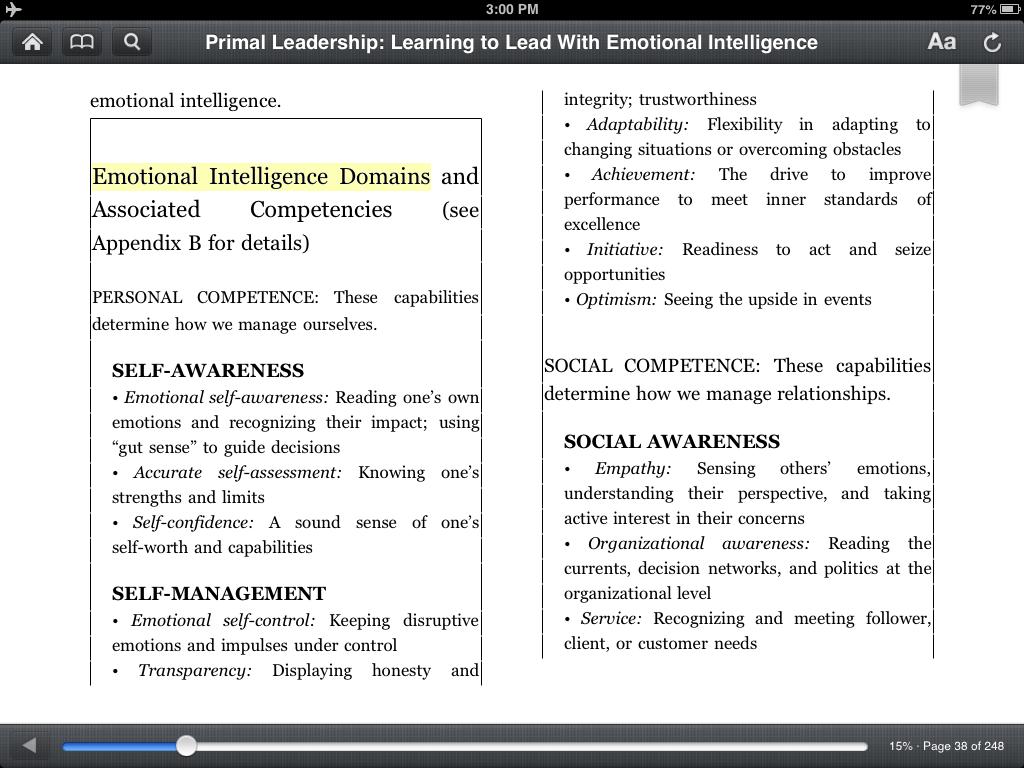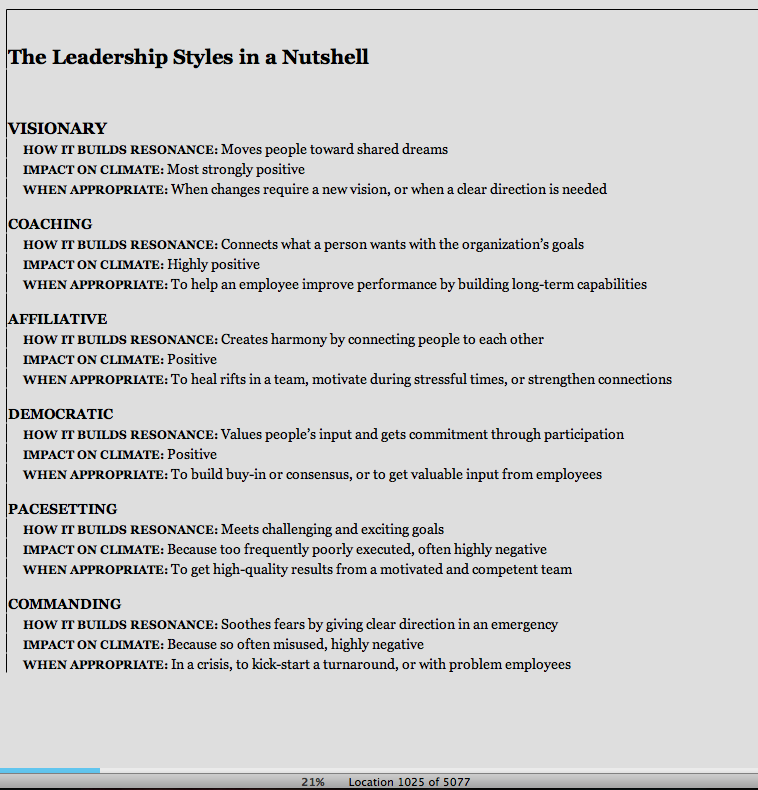The following is an analytical book review of Daniel Goleman, Richard Boyatzis, and Annie McKee’s Primal Leadership.
The thesis of Goleman, Boyatzis, and McKee’s Primal Leadership is that it is neither a high IQ nor masterful skills that truly make a leader – the key essence is a high level of emotional intelligence.
This emotional intelligence helps leaders create resonance, which is “a reservoir of positivity that frees the best in people” (Location 46). Leaders can do this by moving between the six different leadership styles, while also increasingly growing in the four emotional intelligence domains. If leaders grasp these truths, then the impact across their lives, teams, organizations, and society will be revolutionary.
In the first section, the authors argue for the importance of emotional intelligence, while relating it to resonance. They then describe the four emotional intelligence domains (self-awareness, self-management, social awareness, and relationship management), and the six leadership styles – four of which are resonant (visionary, coaching, affiliative, democratic), and two of which are dissonant (pacesetting, and commanding).
The second part of the book details how to become a resonant leader using Boyatzis’s theory of self-directed learning. This is a section that is full of important insights, such as understanding how change does not just happen because one decides to do it, but how one needs to develop manageable learning goals, seize organic learning opportunities, and practice – all of this in the context of relationships.
The last section of the book highlights how emotionally intelligent leaders can extend their emotional intelligence throughout their teams and organizations. The authors are essentially integrating all the concepts of their book into this section, with a strong bent toward application. Consequently, “to build an emotionally intelligent organization, you need to do three things: discover the emotional reality, visualize the ideal, and sustain emotional intelligence” (Location 3628).
This book is a gem and has helped me, and will continually help me into the future – so for that reason I give it a 5 out of 5.
Here are a few screenshots to give you an overview of the four domains and the six leadership styles:


